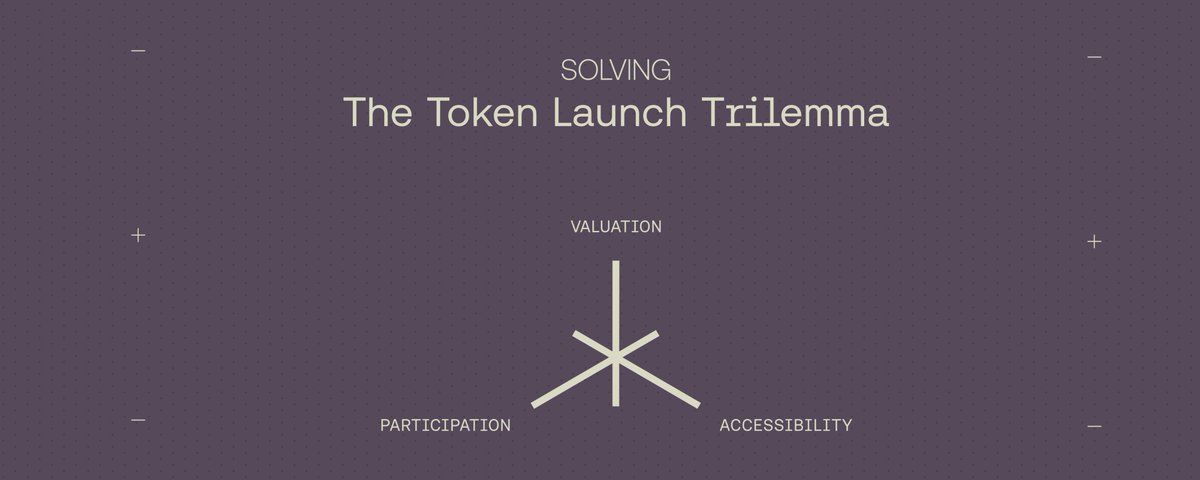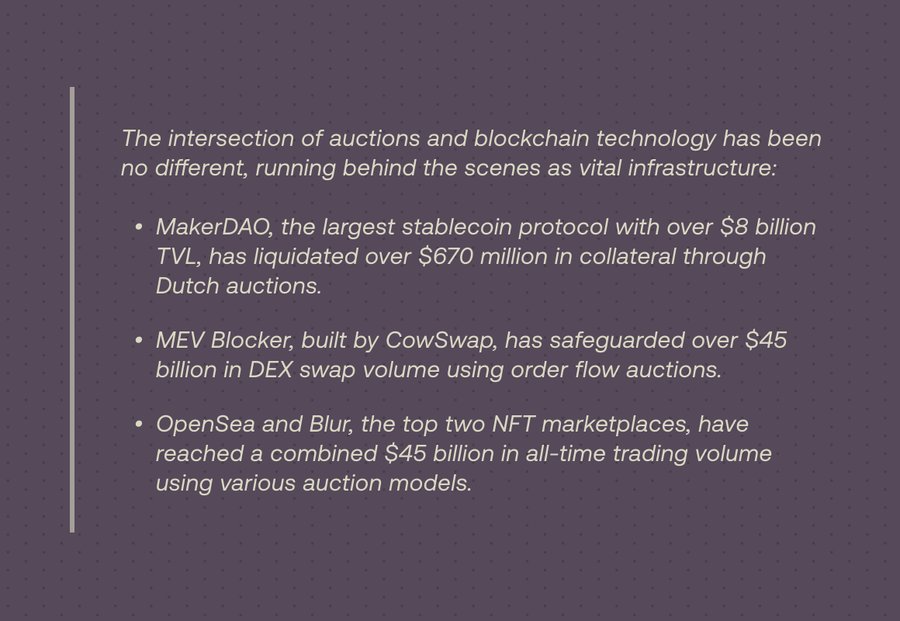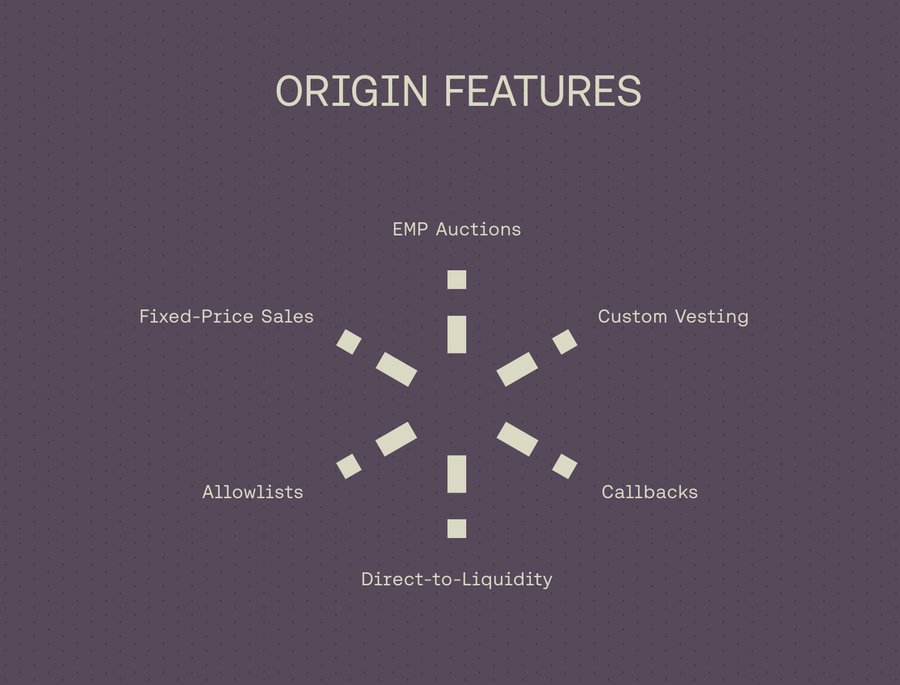By finding a balance between accessibility, engagement and valuation, Origin has become a leader in the next generation of coin issuance.
Author:Axis
Compiled by: Shenchao TechFlow

In our previous article, we discussed the Token Launch Trilemma and introduced the three key elements that any token issuance must focus on: Accessibility, participation and valuation. We mentioned at the end of the article that Axis is a modular auction protocol that can help users easily hold auctions for ERC20 Tokens. It may be able to solve this dilemma.
As an effective tool for price discovery, auction is backed by a special research field called Auction Theory. Looking back at what we mentioned in our first article, auctions have helped manage and facilitate billions of dollars in transactions in the crypto space.
However, in the scenario of token issuance, current solutions are not fully optimized and fail to tap the full potential of auction design. Origin is a set of token issuance tools we developed to change this situation and find the best solution to the trilemma dilemma.
The combination of sales and blockchain technology plays an important infrastructure role in the industry, supporting operations in multiple key areas:
-
MakerDAO: As currently the largest stablecoin agreement, its total locked value (TVL) exceeds US$8 billion and has successfully liquidated more than US$670 million in mortgage assets through Dutch auctions.
-
MEV Blocker: This tool, developed by CowSwap, protects transactions on decentralized exchanges (DEX) through an order-flow auction mechanism, ensuring a cumulative transaction volume of more than US$45 billion.
-
OpenSea and Blur: As the two leading NFT trading markets, the total transaction volume of these two platforms has exceeded US$45 billion and employ multiple auction models to optimize the trading experience and price discovery. These examples fully demonstrate the widespread use of auction mechanisms in the blockchain ecosystem and their indispensable role.

So, what is the problem? Why do these problems arise?
Traditional launch platforms reuse the same old strategies over multiple market cycles, despite their obvious flaws. Fixed price ICOs are still a common option, but why do we always return to this approach? We may wish to refer to @VitalikButerin’s 2021 article on the analysis of fixed-price sales below market clearing prices. He pointed to two main reasons: concerns about fairness and management of community sentiment.
“The basic principle for managing community sentiment is simple: You want prices to rise, not fall. The only way to avoid falling prices is to set the selling price low enough to ensure that market prices will almost certainly be higher after the launch. However, how to achieve this goal without triggering a swarm of people that will eventually turn into another form of auction? rdquo;

Trade the old for the new!
Origin provides a suite of specially designed tools designed to address these complexities and solve the triple dilemma of token issuance. Although each auction type in Axis can be used individually, a multi-stage token issuance strategy that combines the advantages of different systems may be a more ideal choice.

Fixed price sales
In the first stage of issuance, the project party can start through fixed-price sales and operate on a first-come, first-served basis. Our smart contracts provide an optional whitelisting feature that limits participation to early community members. In addition, Axis also supports the release of tokens to users in stages. The release time can be flexibly configured, which is provided by default, and can also integrate custom or third-party solutions. This design is critical to aligning the incentive mechanism. Early community members who want to buy tokens at below the market clearing price need to obtain their tokens through gradual release to ensure a balance of long-term benefits.
EMP auction
In the second stage, project parties can use Origin’s flagship auction mechanism to discover the market clearing price of the token. In the next article, we will explain in detail the Encrypted Marginal Price (EMP) system. Simply put, the system allocates tokens to the highest bidder, and the clearing price is determined by the last bid that successfully fills. Discovering the clearing price of the token is crucial because it lays the foundation for Origin’s final liquidity issuance.
Direct access to liquidity
Origin’s auction mechanism provides a unique Direct-to-Liquidity feature that enables instant liquidity of tokens on a decentralized exchange (DEX). This means that funds from the auction can be directly used to establish an initial liquidity pool, and users can flexibly choose to use all or part of the funds. This feature is optional and highly customized, ensuring that bidders have a clear understanding of how their funds are being used before the auction. Compared with traditional processes that require manual operation and are prone to errors, this design adds a layer of programmatic security to the entire process.
It should be reminded that accurately determining the clearing price of tokens requires careful analysis. Therefore, for those users who are not familiar with auction valuations, they may be more inclined to wait for the token to go online on DEX before participating in the transaction.
How Origin solves the triple problem of token issuance
Now let’s review Origin’s multi-stage approach within the framework of the token issuance trilemma:
the first phase
Fixed price sales are designed to attract participation from specific user groups. The pricing at this stage is lower than the market clearing price, but buyers need to gradually unlock their tokens over time to align the long-term interests of buyers and project parties.
the second phase
The auction mechanism ensures wider user participation, but excludes buyers who bid below the market clearing price. At the same time, the market valuation of the initial token supply is determined.
the third stage
The direct liquidity mechanism opens transactions to all, promotes collective participation, and supports continuous exploration and discovery of prices.

Returning to Vitalik’s point in 2017, which we mentioned in the first trilemma of token issuance, he proposed a strategic trade-off:
“We can compromise a little on the guarantees of participation and mitigate the impact by introducing a third dimension of time……
In any case, uncertainty in valuation or uncertainty in participation is always difficult to completely avoid. However, when there is a choice, it seems wiser to prioritize the uncertainty of participation and minimize the uncertainty of valuation. rdquo;

Origin’s phased release strategy is a concrete practice of these insights. By gradually expanding the scope of participation, each stage is optimized for one core aspect of the triple dilemma, and all stages together constitute a balanced overall strategy. This design ensures that despite possible uncertainties in the participation and valuation process, the release strategy is structured to maximize the overall interests of project parties and users.
This method not only effectively responds to the complexity of the triple dilemma problem of token issuance, but also sets a new standard for how to introduce tokens to the market.By finding a balance between accessibility, engagement and valuation, Origin has become a leader in the next generation of coin issuance.
Welcome to join the official social community of Shenchao TechFlow
Telegram subscription group: www.gushiio.com/TechFlowDaily
Official Twitter account: www.gushiio.com/TechFlowPost
Twitter英文账号:https://www.gushiio.com/DeFlow_Intern



